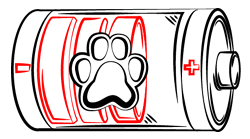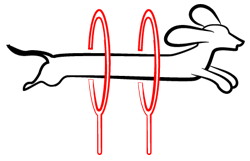
Paws ‘N’ Pups Quickview
Size
| Energy Level
| Trainability
| Paws ‘N’ Pups Rank
|
Characteristics
| Physical Characteristics: Height: 21-27” Weight: 35-75 lbs. Energy Level: Moderate – High | Colors: The American Kennel Club recognizes the American Leopard Hound in the following colors:
|
Health & Longevity
Average Life Span: 10-14 years
Cousin to the Catahoula Leopard Dogs, the American Leopard Hound is a generally healthy purebred. But these pups have both serious and minor health complications that their breed is prone to. One of the biggest health issues for American Leopard Hounds is hip dysplasia. While dysplasia can also affect the elbows and kneecaps, these pups most commonly develop this birth defect in their hip bones. This sort of dysplasia causes deformities in the hip bone and socket, resulting in cartilage deterioration, nerve damage, and random dislocation.
The symptoms of hip dysplasia are subtle, but some signs might include an awkward limp or walking pattern, as well as obvious hip dislocation. Surgical intervention is required before this condition worsens, causing a permanent limp and painful, severe arthritis.
Another health complication that may affect your American Leopard Hound is:
Skin Allergies
American Leopard Hounds have sensitive skin beneath their dense double coat of smooth fur. Sometimes, mostly in drastic weather changes, they can experience hair loss, leaving their skin open to allergic reactions to dust, mites, fleas, and other outside irritants. Symptoms of an allergic reaction are redness, blotchiness, hair loss, swollen tissue, and severe itchiness. Vets can prescribe antibiotics to clear up any allergy-related infections, as well as medicated, gentle shampoo to soothe inflamed skin.
Other health concerns that your American Leopard Hound could be at risk for include bloat, cataracts, and cherry eyes. Heart disease, heartworms, and bone cancer are also prevalent health concerns, but this applies to every dog breed. On average, the American Leopard Hound has a lifespan of 10 to 14 years.
Temperament & Train-ability
The American Leopard Hound is seen as an often domineering breed, but these pups also boast high intelligence, affection towards their loved ones, and a protective nature. These dogs make excellent guard dogs and watchdogs, as they are always alert and give off warning barks and growls to grab your attention if a threat approaches. These pups, while suspicious of strangers, need a moment of formal introduction to get to know the new people. Use your role as alpha to introduce new friends to your American Leopard Hound. It might take a few sniffs and a walk around or two, but eventually, your pup will see your new friend as their new friend.
American Leopard Hounds are very energetic and active, so they would be a great match for fitness-minded pet owners. These pups love a good romp through a fenced-in backyard. But they may get in a bit of trouble at the dog park. Bred with a natural dominance, these purebreds might buck up to other dogs, declaring their role as leader. Most dogs, especially large canines, find this behavior unacceptable, and a fight might ensue. Be on the safe side and keep a very close watch on your pup if you decide to take him to a dog park. You should also socialize your American Leopard Hound with other dogs to teach him acceptance and tolerance.
Training-wise, the American Leopard Hound might be a stubborn trainee if you have yet to establish yourself as the dominant one. Use your leadership role to deliver instructions in a clear, concise, positive tone. Keep your voice patient and kind, but firm. Reward your American Leopard Hound for his compliance with meaty, nutrient-rich treats, and give him lots of encouragement and praise to boost his confidence.
Grooming
American Leopard Hounds have a simple grooming regimen. These pups’ coats are sleek and smooth with soft, fine hairs and a reputation for being a low shedder. Brush your pup 1-2 times a week to remove excess hairs and debris, but otherwise, leave his fur as-is to protect his skin from inclement weather. Bathe your American Leopard Hound every 6-8 weeks. Or, if you would feel more comfortable, take him to a professional groomer for a bath, brush, and toenail trim.
Diet
The American Leopard Hound loves to eat, and eat, and eat. He could easily become a chronic overeater, especially if you are the type of pet owner to rely on automatic feeders. Ditch those in favor of a good meal schedule. Divide 2 to 2 ½ cups of dry, high-quality kibble into two meals per day. And keep lots of meaty treats on hand for training sessions and good behavior.
Looking for an American Leopard Hound?
 Find An American Leopard Hound Breeder |  American Leopard Hound Puppies For Sale |  Adopt An American Leopard Hound |
Cost
American Leopard Hounds are rare in the purebred world, so it is hard to pinpoint a cost range. However, if you check a local animal shelter first, you might get lucky in finding the perfect adoptable companion for your family. In which case, adoption fees for an American Leopard Hound range from $75 to $250. There are also a few add-ons, such as vaccinations and spay or neuter services, that might rack up the fees between $400 to $550.
You should also factor in the long-term costs of chew toys, nutrient-dense kibble, a medical emergencies fund, regular vet visits, and annual vaccination updates.
Breeder-wise, search for a breeder with a trustworthy, reliable reputation. American Leopard Hounds, as mentioned, are a rarity, so prices could be anywhere from $300 to well over $850. Costs usually depends on the popularity of a purebred, as well as the inclusions, requirements, and expectations of a breeder.
Paws ‘N’ Pups Ranking
Paws ‘N’ Pups ranks every breed out of 4 with 1 being easiest to integrate into your life and 4 being the toughest – The lower the ranking the better.
Ranking takes into account a few basic factors including cost, skill level needed, high vs low maintenance and how critical regular training is to success. The American Leopard Hound earns a 2 on the integration scale. The biggest problem these pups have is their dominant attitude and alpha nature. Even when it is obvious that someone else is the leader of a pack. Socialization can go far in setting these pups on a better, less domineering path, but it might take months of patience, hard work, and determined training. In the end, you will have a well-trained, well-behaved American Leopard Hound who operates with tolerance, acceptance, and love.
Breeds Similar To American Leopard Hound
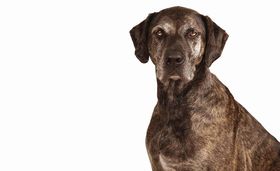 Catahoula Leopard Dog | 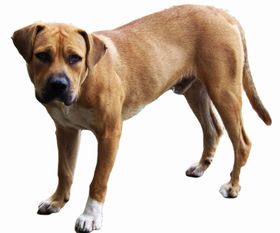 Black Mouth Cur | 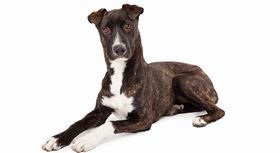 Mountain Cur | 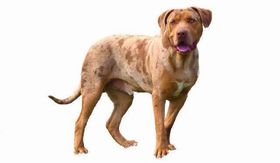 Catahoula Bulldog |


